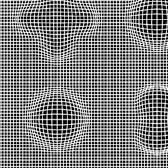
NDE in the Digital Age - A Future Perspective Claudia V. Kropas-Hughes, Ph.D. NDE Research Leader Air Force Research Laboratory Materials and Manufacturing Directorate Wright-Patterson AFB, Ohio, USA The future of NDE will focus along two lines: (1) maintaining legacy (aging) systems longer; and (2) developing means to examine new systems which will be considered relatively disposable (e.g. automated/robotic systems, single use systems). The first issue will focus on answering questions such as: “Is it still safe to fly that aircraft?” “What is the safety margin on the aircraft now that we are extending its service life?” The second issue will require the knowledge that the system is operational, without operating it! In both cases, the key will be having KNOWLEDGE about the system as a whole, including the overall health of the system at the current moment, AND an ability to predict the future health of the system when in use. NDE measurements will be the key to providing data, from which we will extract the information, and with experience, develop knowledge on current and future system health. This use of NDE measurement, as data into the knowledge hierarchy (which is well beyond our current uses for defect detection), is a major paradigm shift in the way we think of and perform NDE! This paradigm shift - using NDE data to provide information to the knowledge base of the overall air system - will require new types of NDE tools to be developed. These tools or sensors must have additional capabilities than traditional NDE tools: area health monitoring, on-board, real-time sensing of system performance as well as flaws. New computational analyses techniques and algorithms will also require development, to extract information from the data. The NDE measurement process flow would be: from the NDE sensors, data is obtained. From this data, information must be extracted: characterization information, about both the material of the system as well as any flaws or their pre-cursor development. This information is added with past information and experience into the overall knowledge base of the system. In addition, the information will now be available for future analyses that will permit a temporal tracking of a system throughout its life cycle. Back